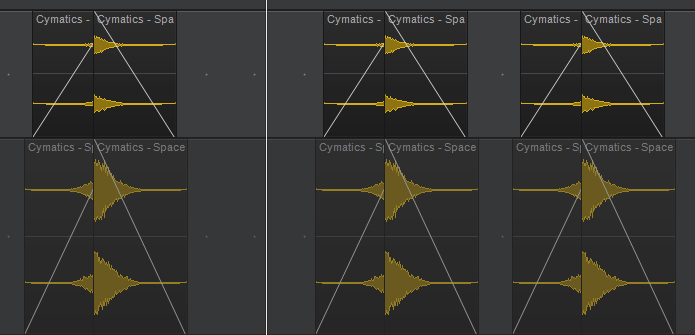LOFI MUSIC ACADEMY
Layering and Arranging in LoFi: A Guide to Creating Depth and Dynamics
LoFi music is known for its warm, nostalgic vibes, often created through the use of layering and careful arrangement. For both beginner and intermediate producers, mastering these two elements is key to crafting engaging and emotionally rich LoFi tracks. In this blog post, we’ll break down the essentials of layering sounds and arranging your tracks to keep them interesting, without losing that laid-back, chill vibe.
Why Layering is Important
One of the most defining characteristics of LoFi music is its texture—the combination of different sound layers that create a warm, immersive atmosphere. Layering involves stacking multiple sounds together, whether they’re melodies, ambient textures, or percussion, to create depth in your track. In LoFi, you don’t want your mix to sound too busy, but you also want it to have enough richness to captivate listeners.
To achieve this balance, think about how you can use subtle layers. For instance, pair a simple piano melody with ambient noise like vinyl crackle or soft rain. This creates a nostalgic and intimate feeling, characteristic of LoFi. The key is to make sure the layers complement each other and fill different parts of the frequency spectrum. You can use EQ to carve out space for each sound, ensuring nothing is fighting for dominance in the mix.
Creating Emotional Depth with Layering
LoFi drums have a distinct sound: warm, slightly muffled, and often imperfect. Here’s a breakdown of the key drum elements and how to approach crafting them.
Layering also plays a big role in building emotional depth in your music. By stacking sounds thoughtfully, you can evoke different feelings—whether it’s melancholy, nostalgia, or calm. For example, start with a soft piano loop and then layer a gentle pad underneath. The pad can have a long decay and a slow attack to create a dreamy, floating feeling. Adding background textures, like field recordings or distant synths, can further enhance the emotional journey you’re taking the listener on.
The important thing here is subtlety. You don’t want to overcrowd the mix or distract from the main melody. Use layers to support and enrich the core elements of your track without overpowering them.

Arranging for Dynamics
While layering helps build texture, arrangement is what gives your track shape and keeps the listener engaged. LoFi music tends to be repetitive, which makes a solid arrangement even more essential. The goal is to create enough variation to keep things interesting while maintaining the chill, relaxed vibe of LoFi.
Start with an 8 or 16-bar loop and then think about how you can introduce and remove elements throughout the track. For instance, you might strip back the drums during a verse and add them back in, along with a bassline or pad, during the chorus. This adds a sense of progression without dramatically changing the core elements of the track.
You can also use breakdowns to build dynamics. A breakdown is where you remove most of the elements—maybe leaving just the melody or a pad playing—before bringing everything back in for a full drop. This creates a subtle tension and release, giving your track more emotional depth and variety.

Using Transitions and Effects
Transitions play a crucial role in arranging your LoFi track. They help guide the listener smoothly from one section to the next, whether it’s from a verse to a chorus or from a breakdown back to the main groove. Simple effects like reverse cymbals, risers, or even filtering out the drums for a beat can give your transitions that extra touch.
LoFi music often uses effects like tape stop, vinyl crackle, or filter sweeps to mark changes in the arrangement. These effects not only help with transitions but also add to the overall vibe of the track. Just remember: subtlety is key. Overdoing effects can take away from the relaxed, intimate feel that LoFi is known for.
Creating a Cohesive Arrangement
As you start arranging your track, think about the journey you want to take your listener on. Are you starting with just a melody and gradually introducing new layers? Or do you kick off with a full groove and then strip it back for a breakdown? The arrangement should feel natural and cohesive, with a clear flow that guides the listener through the song.
Once you’ve got a rough arrangement, listen back to your track a few times. Ask yourself: Does it feel balanced? Are there enough dynamic changes to keep it engaging? If not, this is where you can tweak things—maybe introduce a new element, extend a section, or experiment with layering to add more depth.
Final Thoughts
Layering and arranging are two of the most important skills you’ll need as a LoFi music producer. By layering sounds thoughtfully and arranging your track for dynamics, you can create a piece that’s not only emotionally engaging but also sonically rich. The key takeaway? LoFi is about subtlety. Small, thoughtful changes—whether in layering or arrangement—can make a big difference in how your track feels and flows.
If you’re new to LoFi production or want to dive deeper, remember that practice is your best friend. Experiment with different layers, play around with your arrangement, and don’t be afraid to make mistakes. The more you practice, the more you’ll find your unique sound and style.
Stay tuned for more posts on LoFi music production, and happy producing!
Lofi Music Academy
If you have any questions, please leave a comment in the community area or use the contact form. Thank You --
Discover the 6 Essential Steps to Create a Release-Ready Lofi Track from Scratch—using just budget gear in your bedroom or home studio!
Click The Button Below To Receive The Free 27-page PDF, "6 Essential STEPS to Create a Release - Ready Lofi Track from scratch"
When you signup, I'll be sending you weekly emails with additional free content.
©2025 Copyright LOFI MUSIC ACADEMY. All Rights Reserved